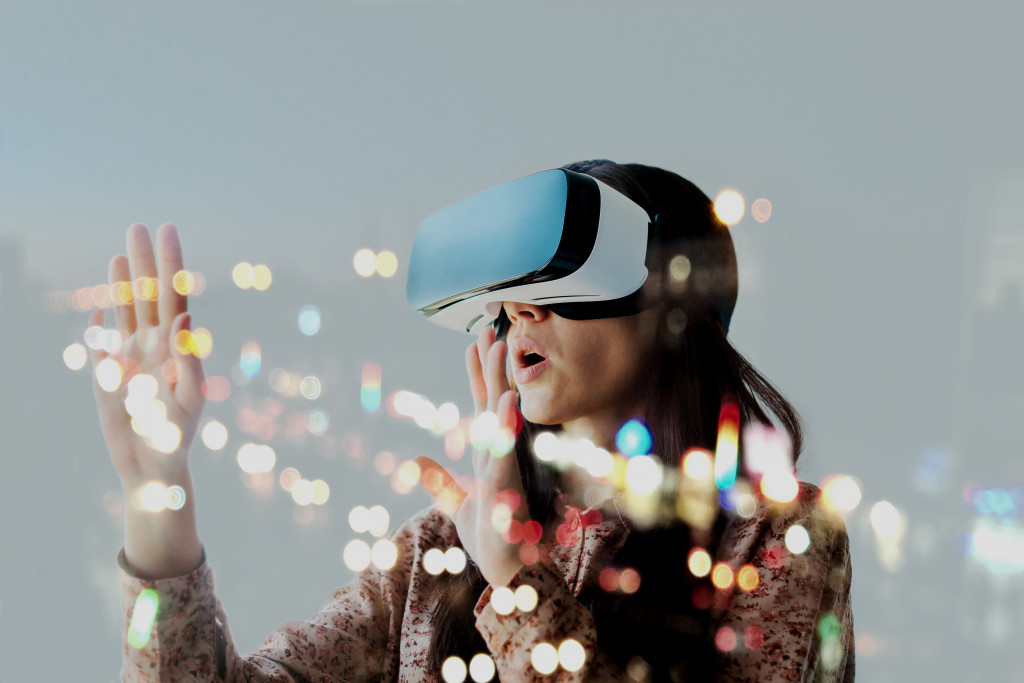Office table, computer, chair, documents, and stationery—these elements make up your traditional workspace, and for the longest time, were all you really needed. You’d meet your quota for the day, maybe go out for dinner with some colleagues, and repeat the process tomorrow.
However, much has changed since those simpler times, and we owe it all to the years of technological advancement. Unlike before, work is no longer limited to the walls of an office building. Business operations now reach all four corners of the world, from outsourcing accounting services to meetings with international clients, we have become more interconnected on a global level.
The dawn of the internet era saw the first fundamental shift, introducing a new digital landscape that offered countless opportunities. But, in today’s business climate, a new trend is on the rise.
And unlike all that came before it, this introduces an extension of reality bound by no limits.
Extended Reality
Extended Reality, or XR in short, relates to all virtual environment technologies, namely augmented reality (AR), virtual reality (VR), and mixed reality (MR). This technology is capable of simulating entirely new environments or even merge virtual spaces with the real world, much like how sci-fi movies depict the future.
The biggest takeaway with XR is that by definition, the only thing holding you back is your creativity and imagination. With the right application and software, one could go from their simple living room space and immerse themselves inside the international space station. And with a group of people, you could access the same virtual environment and go on daunting adventures together.
One big misconception that the majority of people tend to make, though, is that virtual reality is only suitable for games and entertainment. While it does have its applications, many businesses are already integrating the use of XR into their workplace.
They are reaping its benefits, staying ahead of the trend, and are discovering new strategies to aid in their operations.
Team Collaboration
Possibly one of the most significant contributions of XR is its innovation to team collaboration. Instead of commuting to work, shared virtual environments allow teams to access the same virtual space from the comfort of their home. This enables businesses to carry on with work as usual, without putting anyone at unnecessary risk.

Furthermore, extended reality breaks down the barriers of the real world and provides teams the chance to practice creative freedom.
- Design: With an entire virtual landscape as their blank canvas, teams can immerse themselves with their design and experience their work on a different level. Colleagues can offer suggestions and make instant changes in real-time regardless of their location.
- Meetings: Much like your regular meetings, you can also simulate virtual environments best suited for conferences, presentations, and brainstorming sessions. But unlike the real world, everyone can get up close and personal with the virtual data.
- 3D Models and Building Plans: To help review models, blueprints, and plans, shared virtual environments also have much to offer technical teams. XR lets you import these files and projects, and experience them from a whole new perspective.
Training and Development
On top of being an excellent team collaboration platform, XR also doubles down as one of the best approaches to business training and development. Instead of spending a considerable sum on equipment and supplies dedicated to training alone, companies can opt to invest in VR headsets and systems.
From large lecture rooms filled with virtual assets to even experiencing surgery first hand, these are but some ways your business can implement XR into your training and development plan.
- Safety Protocol: Instructional guides and reading materials can only go so far when it comes to offering real help with dangerous situations. However, with the help of VR, businesses can simulate these situations and give employees hands-on guidelines on what they should do.
- Lectures: Just like conferences, XR can simulate virtual environments best suited for holding classes and immersing employees to learn. Instructors can create virtual classrooms that facilitate the development of soft skills or how to operate new equipment.
A New Reality
To sum it all up, XR is leveling the world of technology and the business landscape with the introduction of a “new reality.” One wherein there exists no limits, a virtual environment that provides businesses across all industries the opportunity to transform their operations.
And while it still in its infancy, we can expect many more to come from it as it continues to evolve and develop. Soon enough, it will leave the niche market and breakthrough into the mainstream.
So, the question is, will you stand on the sidelines or capitalize on this emerging technology?

